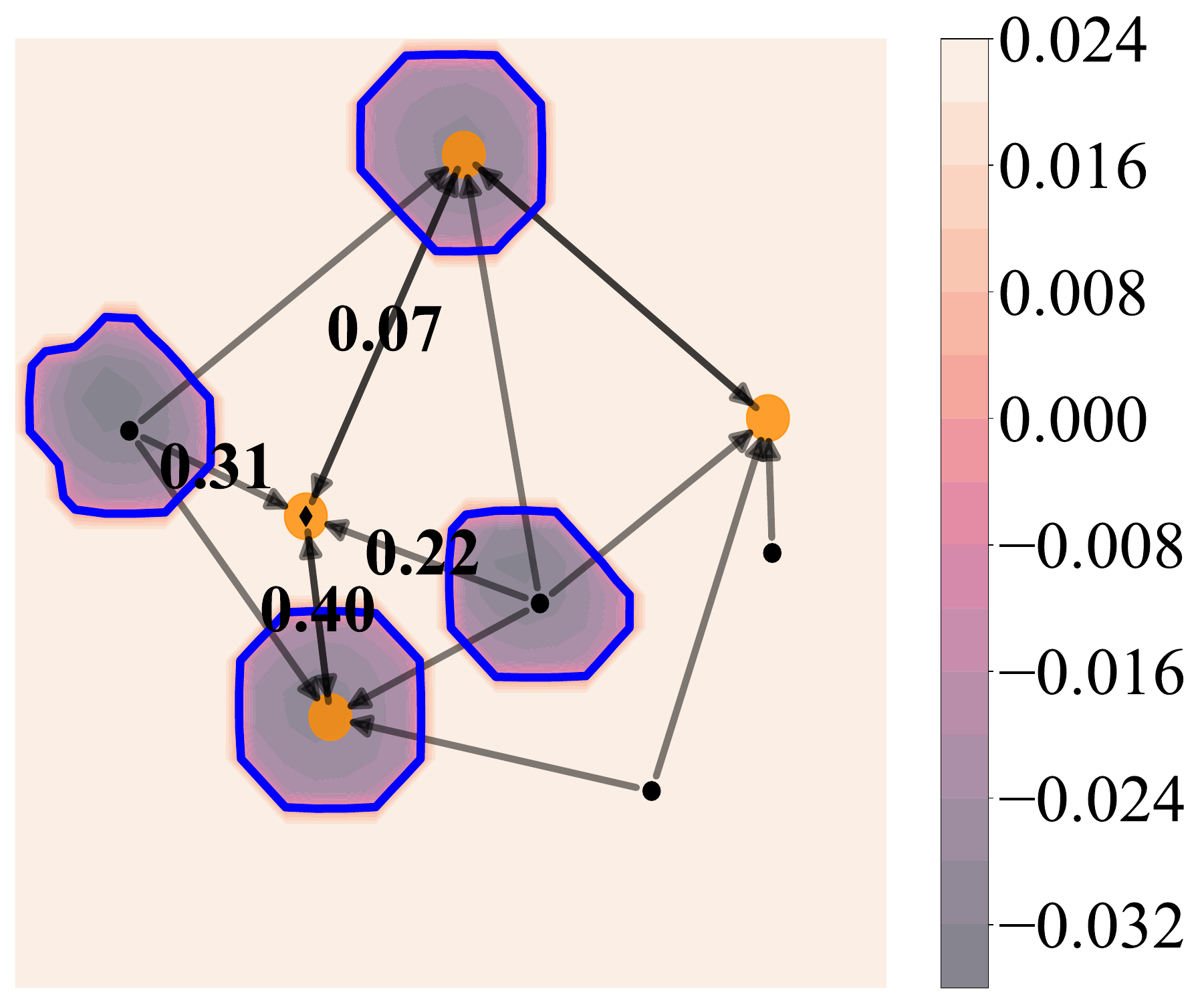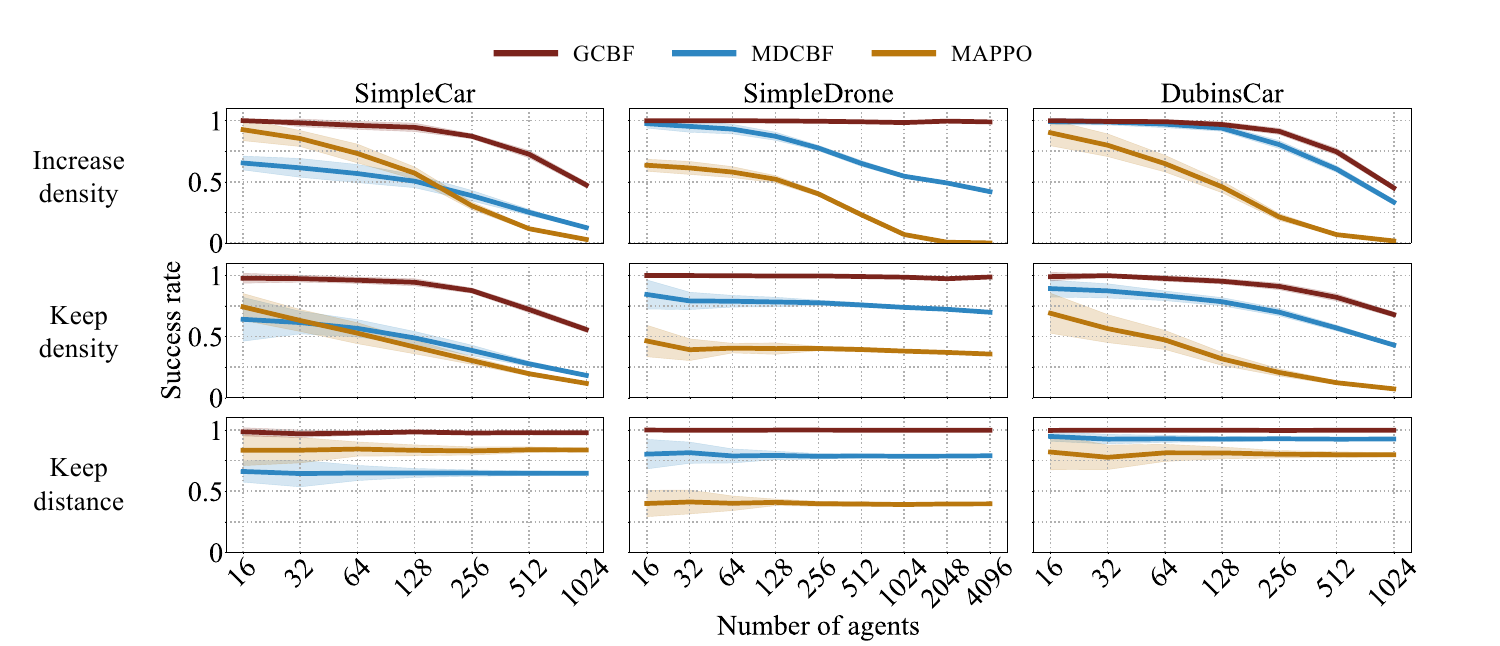Algorithm Structure

We design the node features to be the indicators of the types of the nodes (agent/LiDAR hitting point/goal), and edge features to be the relative positions, velocities, etc. The information is processed by the graph neural network with attention, which outputs the CBF value \(h_i\) and the collision-avoidance control \(u_i^\mathrm{NN}\). The learned CBF determines whether to use the nominal controller \(u_i^\mathrm{nom}\) or switch to the collision-avoidance controller \(u_i^\mathrm{NN}\).

The learned CBF contour with the attention value.
Numerical Results

GCBF outperforms the baselines across the three environments and the three sets of experiments, namely, increasing density of the agents in a fixed workspace, increasing the size of the workspace to keep the density same, and increasing the size of the workspace but limiting the average distance traveled by agents. GCBF outperforms them because of a better structure than MDCBF, and RL sacrifies safety.
Related Work
This work is the fundation of our work GCBF+ and DGPPO.
- GCBF+: an improved training framework of GCBF with much better performance.
- DGPPO: Extend GCBF elegantly for safe multi-agent reinforcement learning.
For a survey of the field of learning safe control for multi-robot systems, see this paper.
BibTeX
@inproceedings{zhang2023gcbf,
title={Neural graph control barrier functions guided distributed collision-avoidance multi-agent control},
author={Zhang, Songyuan and Garg, Kunal and Fan, Chuchu},
booktitle={Conference on Robot Learning},
pages={2373--2392},
year={2023},
organization={PMLR}
}